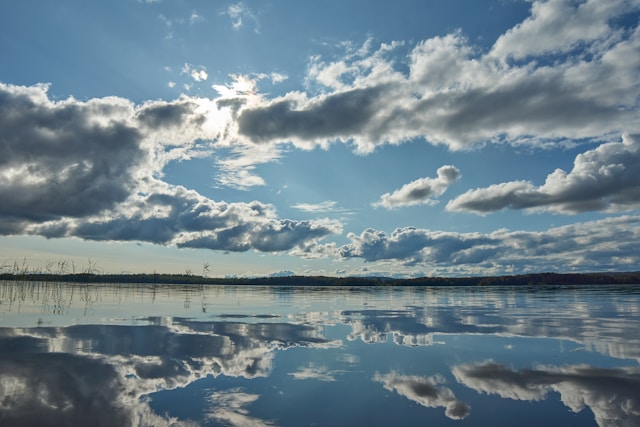Geysers rank among the most captivating wonders of nature on our planet. The majestic rush of water and billowing clouds of vapor they unleash form a breathtaking spectacle that entices visitors from across the globe. However, beneath their apparent simplicity lies a treasure trove of scientific and cultural wisdom encapsulated within every eruption.
What Exactly Is a Geyser?
A geyser is an extraordinary kind of hot spring that displays intermittent eruptions, propelling water and steam skyward. The term “geyser” derives from the Icelandic word “geysir,” which translates to “gusher.” The energy required to trigger a geyser’s eruption stems from the Earth’s internal geothermal heat. However, the presence of heat alone is insufficient to create a geyser.
Formation and Eruption Process
The formation of a geyser involves a combination of specific geological circumstances, which can be succinctly described as follows:
- Presence of water: Geysers necessitate a water source, typically originating from rainfall or snowfall that infiltrates the ground. As the water seeps into the Earth’s surface, it gradually trickles downward until it reaches the heat source;
- A heat source: Geysers are fueled by geothermal heat emanating from the Earth’s mantle. This heat gradually warms the water trapped below the surface, causing steam to form and eventually resulting in the geyser’s eruption;
- A reservoir or plumbing system: The subterranean plumbing system of a geyser comprises fractures and permeable rocks within the Earth’s crust. These fractures serve as channels through which water can gather in a reservoir. As time passes, the reservoir gradually fills with water, patiently awaiting the ideal conditions for an eruption;
- An overlying nonporous rock layer: An essential factor in the formation of geysers is the existence of an impermeable layer of nonporous rock positioned above the reservoir. This layer, typically consisting of solid rock or densely compacted sediments, functions as a barrier that restricts the upward movement of heated water. Consequently, pressure gradually accumulates within the reservoir, significantly enhancing the likelihood of a geyser’s eruption.
The formation of a geyser relies on the harmonious convergence of various geological conditions. These include the availability of water, a heat source, a well-developed plumbing system or reservoir, and a nonporous rock layer positioned above. Together, these factors collaborate to orchestrate the awe-inspiring eruptions that define geysers, rendering them remarkable and mesmerizing wonders of nature.
Geysers Formation Process
| Step | Description |
|---|---|
| 1 | Rain or snow seeps into the ground. |
| 2 | The water is heated by the Earth’s geothermal energy. |
| 3 | The heated water rises through a plumbing system of fractures and porous rocks. |
| 4 | The water and steam get trapped under a layer of nonporous rock. |
| 5 | Pressure builds until the water and steam forcefully erupt through a vent to the surface. |
When the pressure reaches a critical point, water forcefully erupts from the vent of the geyser, giving rise to a breathtaking spectacle. The eruption persists until the pressure is alleviated, at which point the geyser enters the recharge phase. During this phase, water gradually seeps back into the geyser system, initiating the process anew.
Noteworthy Geysers around the World
Geysers, captivating natural marvels renowned for their dramatic eruptions of scorching water and steam, are relatively uncommon and primarily discovered in volcanic regions. There exist roughly 1,000 documented geysers across the globe. Let’s explore a selection of the most renowned geysers:
- Old Faithful, Yellowstone National Park, USA: Old Faithful, the legendary geyser located in Yellowstone National Park, holds an esteemed reputation and attracts a considerable influx of tourists. Its name perfectly captures its unwavering reliability, as it adheres to a predictable eruption schedule. Old Faithful typically erupts at intervals ranging from approximately 44 to 125 minutes. During these eruptions, it releases forceful water jets that soar to heights of 32 to 56 meters, crafting a mesmerizing display that persists for around 1.5 to 5 minutes;
- Strokkur, Iceland: Situated within Iceland’s renowned geothermal region, the Golden Circle, Strokkur stands as a beloved geyser that enthralls countless tourists. Its remarkable appeal stems from its frequent eruptions, transpiring at impressively regular intervals of every 6 to 10 minutes. When Strokkur bursts into action, it propels a striking combination of water and steam to extraordinary heights, reaching an impressive range of 15 to 20 meters. The geyser’s commanding performance never fails to captivate spectators with its sheer power and grandeur;
- Geysir, Iceland: Geysir, situated in Iceland’s geothermally abundant region, carries the honor of bestowing its name upon all other geysers. While its eruptions have become infrequent, Geysir’s historical performances have been awe-inspiring, reaching remarkable heights of up to 70 meters. In recent times, however, the frequency of Geysir’s eruptions has diminished, leading to a shift in attention towards its neighboring geyser, Strokkur, which has taken center stage and captivated visitors with its more regular and captivating displays;
- Pohutu Geyser, New Zealand: Located within the Whakarewarewa Thermal Reserve in Rotorua, New Zealand, the Pohutu Geyser proudly claims the distinction of being the most active geyser in the Southern Hemisphere. This remarkable natural wonder never fails to enchant onlookers with its captivating performance. Erupting once or twice every hour, Pohutu Geyser astounds spectators as it forcefully propels scorching water and steam to staggering heights, reaching up to 30 meters. Its awe-inspiring display is a true spectacle that leaves visitors mesmerized and in awe of nature’s power.
Impact on Environment and Ecosystem
Geysers have a significant impact on the local environment and ecosystems, influencing various aspects of the surrounding ecology. This impact can be observed through the creation of unique habitats, chemical contributions, and attraction for wildlife.
Creation of unique habitats
Geysers create extreme environments characterized by high temperatures and unique physical conditions. These conditions provide a habitat for thermophilic (heat-loving) bacteria and archaea, which are adapted to thrive in such extreme conditions. These microorganisms play a crucial role in the geyser ecosystem by forming the base of the food chain. They serve as a food source for other organisms and contribute to the overall biodiversity of the area.
Chemical contributions
Geysers also contribute to the environment through the release of various minerals and chemicals. One of the notable contributions is the deposition of silica. Silica is dissolved in the hot water that erupts from the geyser and, upon cooling, forms sinter deposits around the geyser vent. These deposits create unique geological formations and can be visually stunning. Additionally, the mineral-rich water from geysers can influence the chemical composition of surrounding water bodies, potentially affecting the nutrient availability and overall water chemistry in the area.
Attraction for wildlife
In colder climates, geysers have a significant impact on wildlife. The warm ground surrounding geysers can act as a thermal refuge, attracting wildlife seeking warmth during harsh weather conditions. Animals like birds, mammals, and reptiles may seek out these areas, especially during the colder months, to conserve heat and increase their chances of survival. Geysers can thus provide critical shelter and habitat for a variety of species, contributing to the overall biodiversity of the region.
Conclusion
Geysers are remarkable natural wonders that demonstrate the power of Earth’s internal heat. They offer not only a beautiful spectacle but also insights into Earth’s geothermal processes and the adaptability of life in extreme conditions. They serve as reminders of our planet’s dynamic nature and the continuous processes shaping our landscapes.
FAQs
Geysers erupt due to the Earth’s geothermal heat heating up water trapped in a reservoir under the ground. When the water temperature rises beyond the boiling point, it turns to steam. The steam builds pressure until it finds a way to the surface, causing the geyser to erupt.
Most of the world’s geysers are located in the United States, particularly in Yellowstone National Park. Other significant geyser locations include Iceland, New Zealand, Chile, and Russia.
Some geysers, like Old Faithful in Yellowstone National Park, are quite predictable, with eruptions occurring at regular intervals. However, most geysers do not follow a regular eruption schedule, making prediction difficult.
Geysers can indeed be dangerous. The water they erupt can be near or above boiling temperature, and the ground around them can be unstable. Therefore, visitors should always observe safety signs and barriers at geyser sites.


